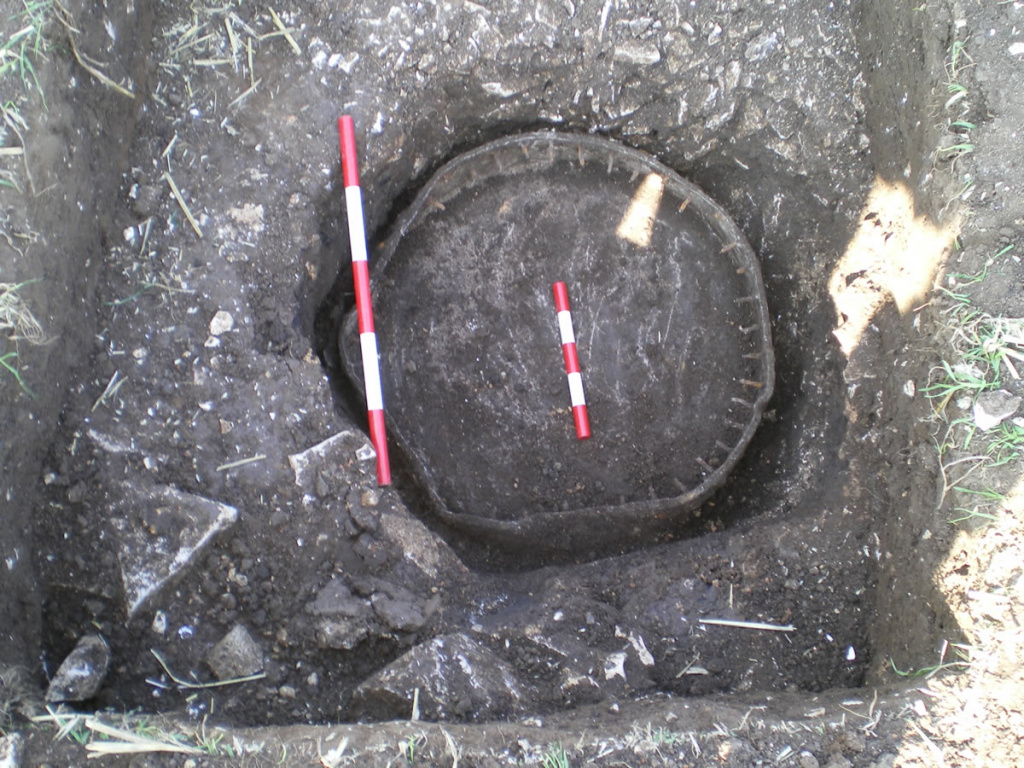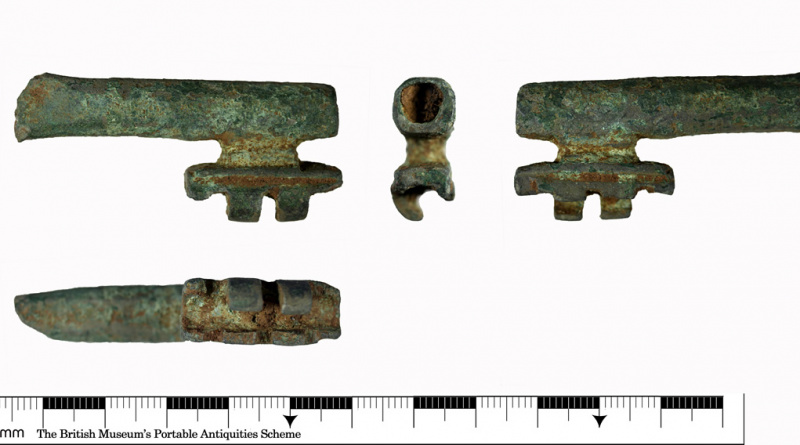PAS Review: week to 2 April 2021
PAS Review: week to 2 April 2021
A round-up of some of the finds recorded at the PAS for the week ended 2 April. There were 135 finds recorded in this week
Featured Find
Cistern or pump base
Object type: Vessel
Period: Roman
Primary material: Lead
Date found: 14/09/2020
Location: East Riding of Yorkshire
A cast lead cylindrical object with nails projecting inwards from the raised rim. It was found by a pair of detectorists in September 2020 on a Roman site near Rudston. It is thought that it is the waterproof end of of a barrel shaped tank, cistern or pump base. It is suggested that the storage of water would have been necessary to allow the year round occupation of the site in the Roman period.
Due to its weight, it took two men to lift the object.
Selection of other finds
Brooch fragment
This treasure find has been donated by the finder and landowner to the Potteries Museum. This fragment reveals what a wonderful object it was. There is a broken circular hole at one end which would have held the pin. The front face appears to have been gilded.
Purse bar
Part of a purse bar which would have had another similar arm on the other side and another bar above. A fabric purse would be draped over one set of arms and the other bar used to attach it to a belt, perhaps via a belt fitting. A complete purse bar of a similar type is shown below:
George III Five Shillings
A Bank of England Dollar struck over a Spanish Eight Reales. All these dollars were are dated 1804 but were issued until 1811. This Dollar was the successor to the emergency countermarked coins and was part of a continuing policy of reusing foreign coins to make up for the deficiency in British silver coinage.
Anglo-Saxon Brooch
A small long brooch dating from the period AD 450-480. The head of the brooch is decorated with a ring and dot motif and the arms are in a cross pattee style.
Key (locking)
Part of a rotary key dating to AD 1100 – 1500. Ward-Perkins London type VI
Mirror Case
Mirror case of 13th or 14th century. The exterior sides are decorated with a cross formed by punched dots. The mirror would have been on the inside, secured by a calcium carbonate cement








